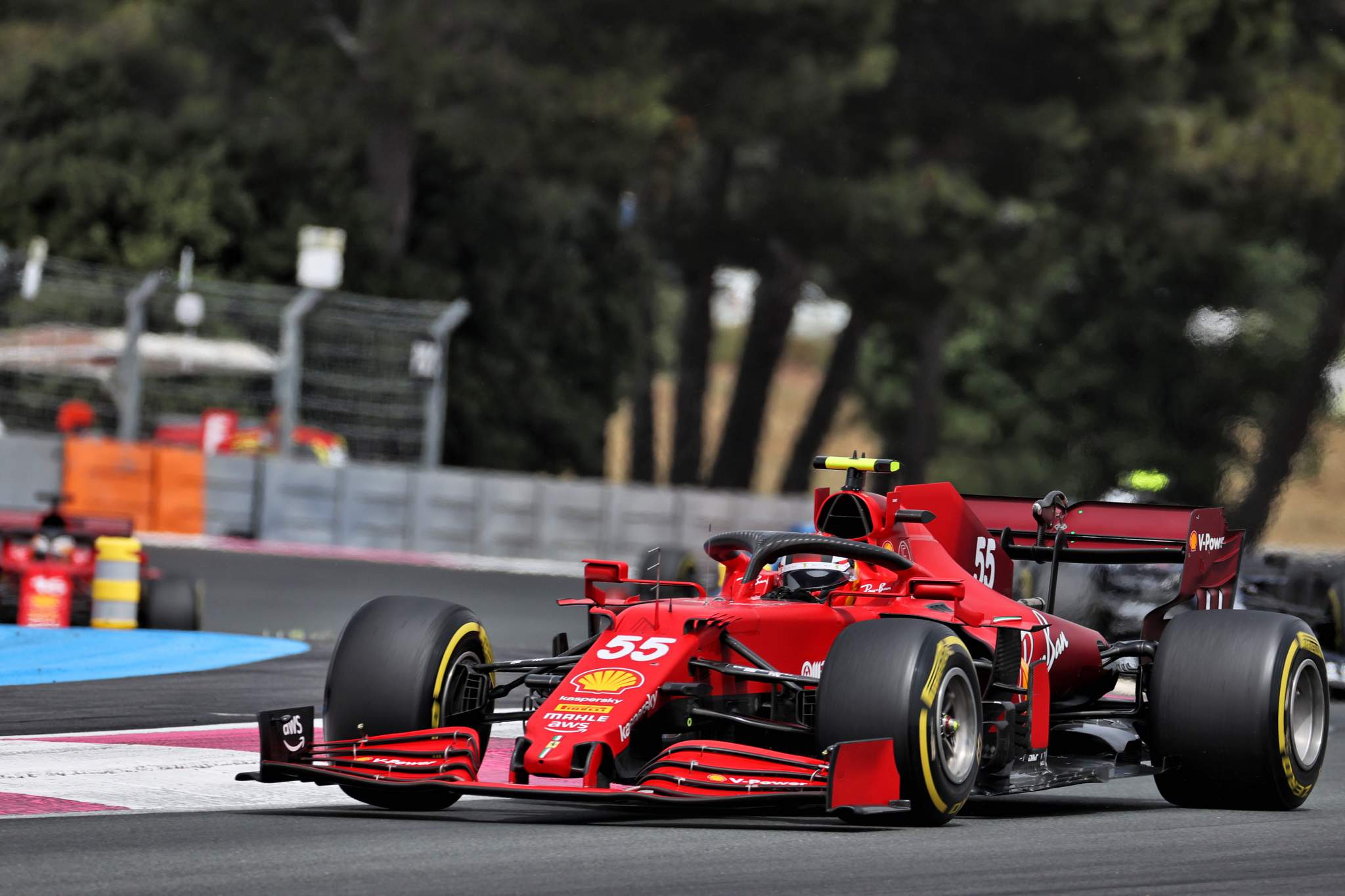Ferrari’s response to its French Grand Prix tyre graining problems – its worst outright performance of the 2021 Formula 1 season so far – was no ordinary combing through the data back at the factory.
So severely were Carlos Sainz and Charles Leclerc afflicted by the problem at Ricard that they finished out of the points, 11th and 16th respectively.
In a car which had otherwise been vying with McLaren as the third-quickest in the field, it was a blip of severe proportions. One which triggered the team into a major investigation.
Sainz was impressed – “It’s the first time in my career I’ve seen a big team utilise all its resources into attacking a specific problem and it was very impressive to see.”
He said that a couple of weeks later, when the investigation was still ongoing and no conclusions had been made.
Even as late as Silverstone, Leclerc was emphasising that his strong performance at the British Grand Prix didn’t indicate it would get on top of whatever had gone wrong in France, saying: “It is not because we found the complete answer of what happened in France. The investigation is still going on and we are still working hard on it.
“And even though we’ve had a good day today we don’t forget about the bad day in France and once we understand the full extent of why we were slow in France then I’m pretty sure we will do a big step as a team and it will help us to reproduce this type of performance as we did today.”
Team boss Mattia Binotto confirmed last week that the investigation is now complete and talked through both the process and the conclusion.
“In France we had a very high tyre wear on the front left, graining and then a lot of wear,” he said. “We tried back at Maranello to approach it in terms of do we have an issue on the car in terms of concept, which is somehow bringing that? Because if we look not only at France but all the past races just before, on average compared to the grid, we were the ones wearing the most on the fronts.
“So it was not just a single issue of France. Was it due to set-up? Or tyre management? Or driver style? These were the things we needed to get answers on.”
So it was a general trait that had already been noted but which the Paul Ricard weekend exposed and punished. That established, Binotto then explained the methodology of the investigation.
“First we moved the parameters of the car concept – suspension geometries, weight distributions etc. We modified them and simulated them. This was all off track on the simulator and we tried to map what is the influence of car design into the tyre wear. Can we replicate what we saw in France?

“Second we worked on the set-up, with the car as it is. Move whatever you can do within that: toe, camber, stiffness, weight distribution, aero balance. Let’s see if we can replicate the tyre wear, trying to model it in terms of simulation to give a better correlation.”
The various simulation loops took several weeks, as the team was also in the busiest part of the calendar, with four races in five weeks. But it was completed between the British and Hungarian races.
“The answers came step by step,” says Binotto. “Then looking at it 360-degrees, trying not to miss anything from the big picture. At the end what we found was very simple, the conclusion being that if you are wearing it’s because you are sliding.
“If you are sliding there are reasons why. It can be simple set-up. You may protect the rear of the car in braking and stability which may give you understeer in medium high or low speed or a combination. But we did move our set up in the following races, try to have a more balanced transition from understeer to oversteer, try to slide the fronts less.”
This, he acknowledges, has maybe meant a small compromise in potential qualifying pace at some tracks.
“Yes, we may have slightly compromised but not much,” Binotto added. “Also the drivers adapt to different set-ups.
“Somehow we are learning a different balance to be used, which applies in our race preparation as well. It’s a learning curve, a key element when you have front tyre wear but doesn’t mean that on all the circuits you need to review the way you approach the set -up.”
This new understanding and a power unit upgrade make Ferrari’s prospects for the second half of the 2021 F1 quite intriguing – something I’m sure McLaren is keeping a close eye on.



